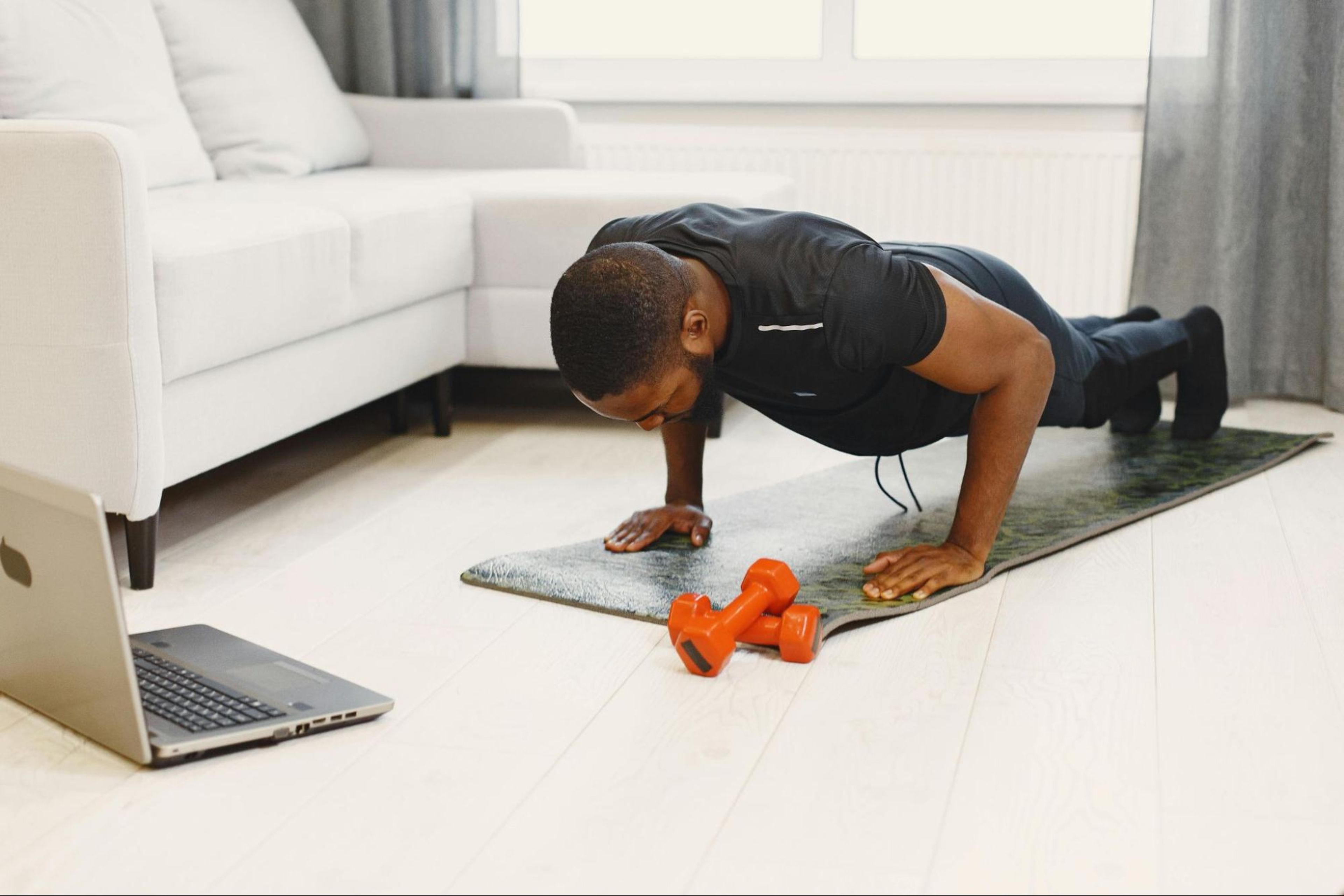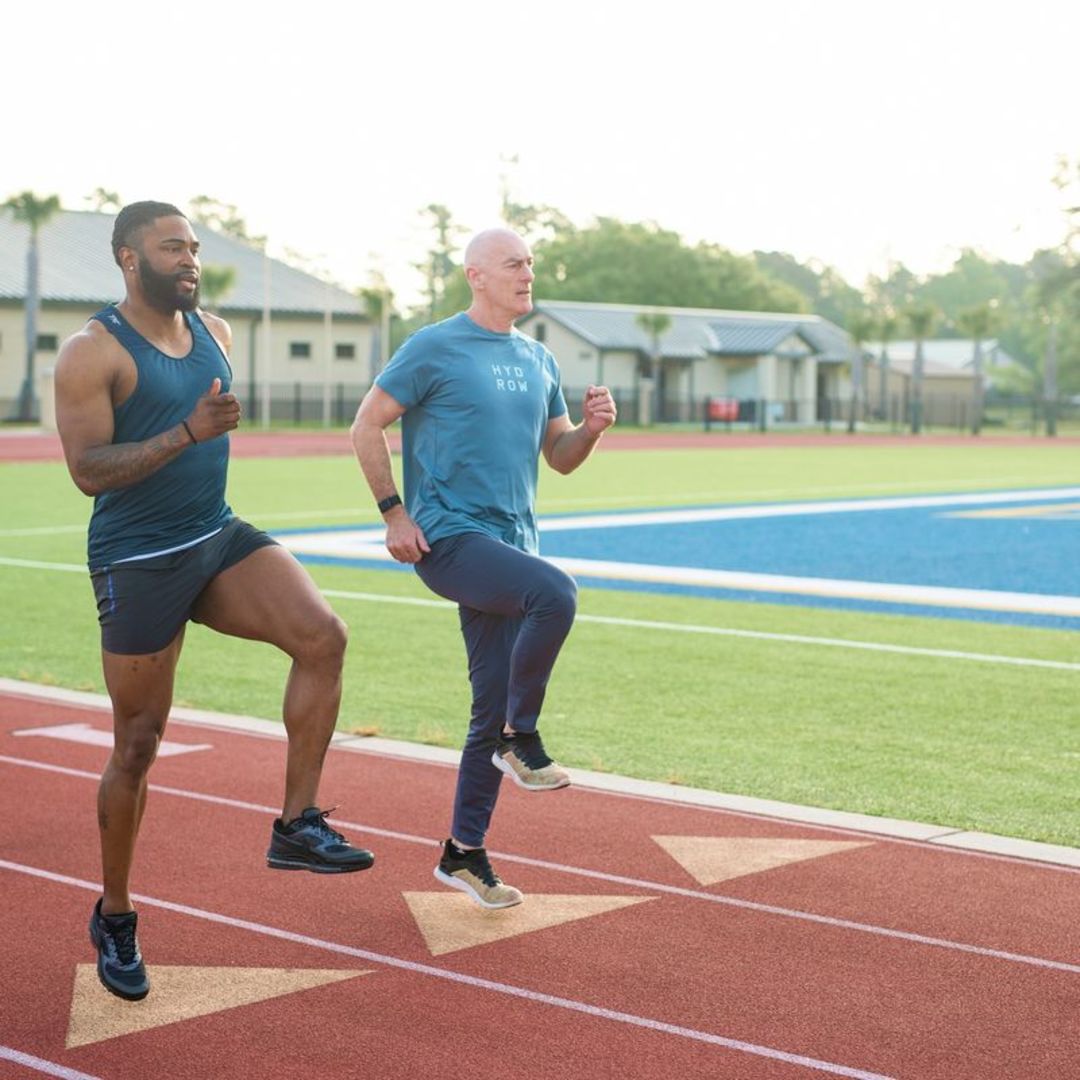10 Exercises to Help Posture

Having good posture—the alignment of your body—is essential to prevent pain, improve mobility, enhance breathing, and boost overall health and confidence. Lifestyle habits such as prolonged sitting, being on a computer or your phone, inactivity, and stress can all lead to poor posture, causing weakening muscles and imbalances that strain your spine and joints over time.
Fortunately, there are certain exercises to help posture that strengthen key muscles and increase functional movement.
In this blog, we’ll explore:
Let’s get started!
Why having good posture is important
Good posture is important for a variety of reasons, impacting both your physical health and overall well-being. Here’s why:
1. Prevents pain and injury
Proper posture helps distribute weight evenly across your body, reducing strain on muscles, joints, and ligaments. It minimizes the risk of developing chronic pain, especially in the back, neck, and shoulders, and helps prevent injuries related to muscle imbalances or overuse.
2. Improves breathing
Standing or sitting with good posture allows your lungs to expand fully, improving your breathing efficiency. Poor posture, like slouching, can compress your lungs and diaphragm, limiting oxygen intake and causing shallow breathing.
3. Enhances energy levels
When your body is aligned properly, it uses energy more efficiently. Poor posture can lead to fatigue because your muscles must work harder to maintain balance and support your body throughout the day.
4. Boosts confidence and mood
Standing or sitting upright with good posture can make you feel more confident, alert, and focused. Studies have shown that posture can influence mood, with good posture linked to improved feelings of well-being and reduced stress.

Did you know?
Over 90% of Hydrow members are still active one year later.
5. Supports digestive health
Proper posture ensures that your internal organs, particularly in the abdomen, are not compressed. This helps digestion, as slouching can slow down the digestive process and lead to issues like acid reflux or constipation.
6. Promotes healthy spine alignment
Good posture keeps your spine in a neutral position, maintaining its natural curves and helping to prevent issues like spinal degeneration, herniated discs, and other long-term spinal problems.
7. Enhances physical performance
Athletes and active individuals benefit from good posture as it improves balance, coordination, and overall movement efficiency. Proper alignment also reduces the risk of injury during physical activities.
8. Increases circulation
Proper posture promotes better blood flow, especially to the extremities. Slouching or hunching over can restrict circulation, leading to numbness, cold hands or feet, or even varicose veins over time.
9. Supports joint health
Good posture helps reduce wear and tear on joints, particularly in the knees, hips, and shoulders. It ensures that your joints work in harmony, reducing the risk of arthritis or joint pain.
10. Improves focus and cognitive function
Proper posture can enhance cognitive function by improving blood flow and oxygen delivery to the brain. Sitting upright and avoiding slouching can help you stay alert and focused for longer periods.
11. Aesthetic and professional impact
Good posture not only makes you look taller and more poised but also gives a positive impression in social and professional situations. It can communicate confidence, competence, and strength to others.
What causes poor posture?
Poor posture can result from various factors, often related to lifestyle, habits, or physical conditions. Here are some common causes of poor posture:
Prolonged sitting: Many people spend long hours sitting—especially in office jobs—which leads to slouched or rounded shoulders, forward head posture, and weak back muscles.
Weak core muscles: The core muscles (abs, obliques, and lower back) are essential for maintaining a stable spine. Weak core muscles lead to slouching and poor spinal alignment.
Technology use: Frequent use of smartphones, tablets, and computers can lead to "tech neck," where the head is tilted forward, straining the neck and upper-back muscles.
Muscle imbalances: Poor posture can be due to muscle imbalances, such as tight chest muscles and weak back muscles, which pull the shoulders forward and round the upper back.
Lack of mobility or flexibility: Tight muscles, particularly in the hip flexors, hamstrings, and chest, restrict proper movement and alignment, causing poor posture over time.
Inactivity: A sedentary lifestyle leads to weak muscles, particularly in the back, hips, and legs, which are essential for supporting good posture.
Improper footwear: Wearing shoes with poor support, such as high heels or unsupportive flats, affects your body’s alignment, causing compensation in the knees, hips, and spine.
Injury or medical conditions: Injuries, such as whiplash or herniated discs, or medical conditions like scoliosis or osteoporosis, can affect spinal alignment and lead to poor posture.
Poor sleep position: Sleeping in awkward positions or using an unsupportive mattress or pillows can misalign the spine and lead to posture problems that you can experience during the day.
Addressing these causes involves a combination of strengthening exercises, stretching, mindful posture correction, and lifestyle adjustments.
The best exercises to help posture
If you’re looking for ways to improve your posture, considering incorporating these exercises into your exercise routine:
Let’s dive into how each exercise improves your posture and how to complete it below:
1. Cat-cow stretch
Purpose: Mobilizes the spine and improves flexibility.
How: Start on all fours, arch your back up (cat), then slowly lower it, lifting your chest and tailbone (cow).
2. Chin tucks
Purpose: Strengthens neck muscles and aligns the head with the spine.
How: Sit or stand tall, pull your chin straight back, and hold for a few seconds.
3. Wall angels
Purpose: Improves shoulder mobility and strengthens back muscles.
How: Stand with your back against a wall, arms at 90 degrees. Slowly raise them overhead like you’re making a snow angel.

What’s your workout style?
Take our quiz and get a customized 14-day training program.
4. Scapular retractions
Purpose: Strengthens the muscles between the shoulder blades.
How: Pull your shoulder blades together and down without shrugging, hold for 3–5 seconds, and release.
5. Planks
Purpose: Builds core strength for a stable spine.
How: Hold a plank position, keeping your body in a straight line and engaging the core.
6. Thoracic extension on a foam roller
Purpose: Increases upper-back mobility.
How: Lie on a foam roller horizontally under your upper back, extend your arms, and gently arch backward.
7. Reverse fly
Purpose: Strengthens upper back and improves shoulder posture.
How: Hold light dumbbells, hinge at the hips, and raise your arms out to the sides like spreading wings. You want to feel like you’re trying to squeeze a pencil between your shoulder blades.
8. Bird-dog
Purpose: Strengthens the back and core, improving spine alignment.
How: Start on all fours and extend one arm and the opposite leg, keeping your core stable throughout.
9. Seated rows (cable machine)
Purpose: Strengthens upper back and improves shoulder alignment.
How: Sit at a cable machine with handles, pull the handles toward you while keeping your chest up and shoulder blades retracted.
10. Standing chest opener
Purpose: Stretches the chest and improves shoulder posture.
How: Stand tall, clasp your hands behind your back, and gently pull your shoulders back and down.
Adding these exercises to your routine will improve your posture by strengthening your core, back, and shoulder muscles while increasing flexibility and mobility in your spine and chest.
Explore more posture improvement exercises with Hydrow
Maintaining good posture plays a crucial role in both your immediate comfort and long-term health. Regularly practicing proper posture and integrating exercises that support it are key to avoiding the negative consequences of poor alignment.
Try to incorporate four to five postural exercises in your daily routine no matter where you are, and you’ll see and feel changes in your body very quickly.
Here at Hydrow, we recognize the importance of good body posture. You can find some great postural strength and mobility exercises in our extensive workout library, along with additional workout types like rowing, yoga, Pilates, circuit training, and strength training exercises.
Learn more about Hydrow today!

Explore Hydrow’s library of 5,000+ rowing, circuit training, yoga, Pilates, and mobility workouts.







